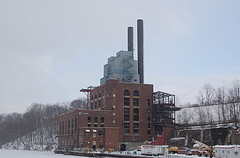
As part of an agreement with the U.S. Environmental Protection Agency and the Department of Justice, Ohio Edison Co. will repower one of its coal-based power plants to operate primarily on biomass fuels. The transformation will reduce the plant’s greenhouse gas emissions by 1.3 million tons per year.
Ohio Edison, a subsidiary of FirstEnergy Corp., recently committed to a consent decree under the Clean Air Act regarding its Shadyside, Ohio, plant, which aims to significantly reduce the amount of sulfur dioxide (SO2), nitrogen oxide (NOx) and carbon dioxide (CO2).
The Shadyside plant will be the biggest coal-fired electric power plant in the United States to repower with renewable biofuel. The plant will repower in 2012, starting mostly with biofuel and using only low sulfur coal including waste wood and vegetation. In 2013, the plant’s emissions will be monitored and enforced toward the goal of making the plant carbon neutral.
Carbon neutrality will be achieved when the CO2 produced from combusting biofuel is offset by the amount of CO2 absorbed the wood and vegetation grown to produce the biofuel. After the switch to primarily biofuel the plant should only emit 400,000 tons of CO2 a year.
The consent decree, lodged in the U.S. District Court for the Southern District of Ohio, is subject to a 30-day public comment period and approval by the federal court.
"This is a great result for the health and the environment of the nation," said John C. Cruden, Acting Assistant Attorney General for the Justice Department's Environment and Natural Resources Division.
He hopes Ohio Edison’s commitment will serve as an example for other companies. Cynthia Giles, Assistant Administrator for EPA's Office of Enforcement and Compliance Assurance, said EPA will pursue similar transformations from utility companies to replace coal-fired electric power with cleaner energy.
In 2008, the EPA released a report on the hazardous effects of greenhouse gases, with CO2 being the worst. Greenhouse gases cause respiratory problems such as asthma and lead to acid rain, smog and haze, which impair visibility even in natural areas.

